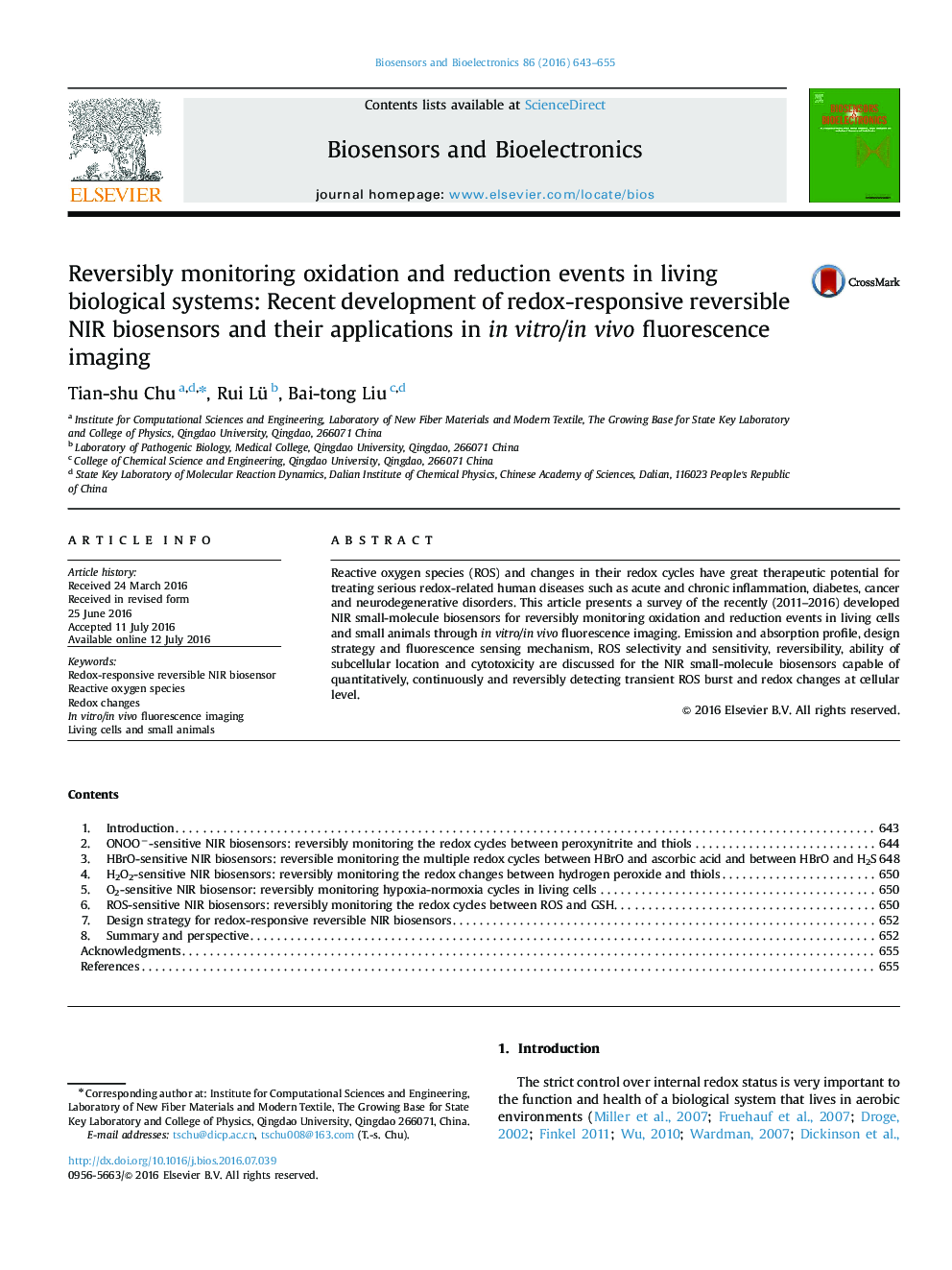| Article ID | Journal | Published Year | Pages | File Type |
|---|---|---|---|---|
| 7230025 | Biosensors and Bioelectronics | 2016 | 13 Pages |
Abstract
Reactive oxygen species (ROS) and changes in their redox cycles have great therapeutic potential for treating serious redox-related human diseases such as acute and chronic inflammation, diabetes, cancer and neurodegenerative disorders. This article presents a survey of the recently (2011-2016) developed NIR small-molecule biosensors for reversibly monitoring oxidation and reduction events in living cells and small animals through in vitro/in vivo fluorescence imaging. Emission and absorption profile, design strategy and fluorescence sensing mechanism, ROS selectivity and sensitivity, reversibility, ability of subcellular location and cytotoxicity are discussed for the NIR small-molecule biosensors capable of quantitatively, continuously and reversibly detecting transient ROS burst and redox changes at cellular level.
Keywords
Related Topics
Physical Sciences and Engineering
Chemistry
Analytical Chemistry
Authors
Tian-shu Chu, Rui Lü, Bai-tong Liu,
